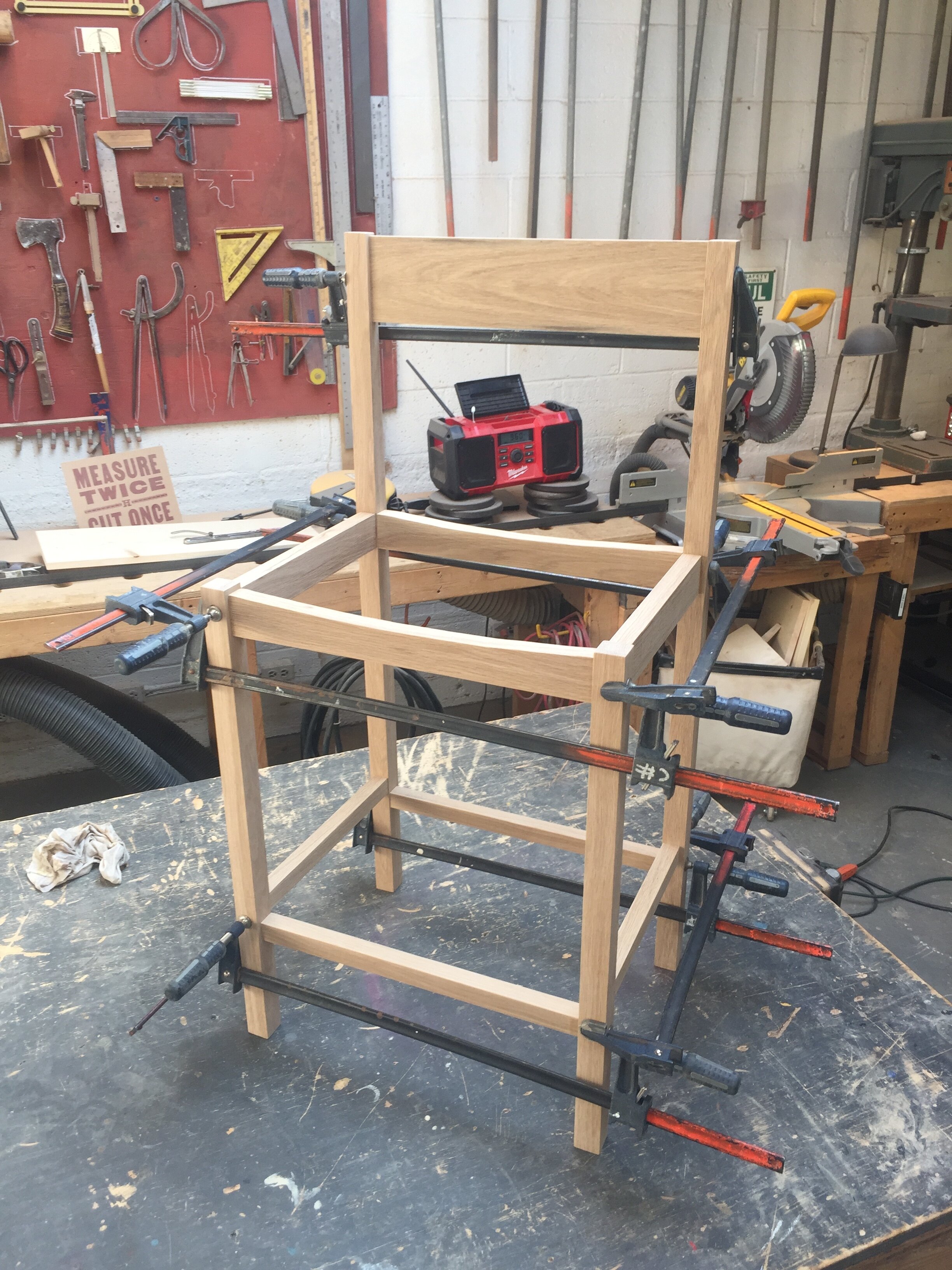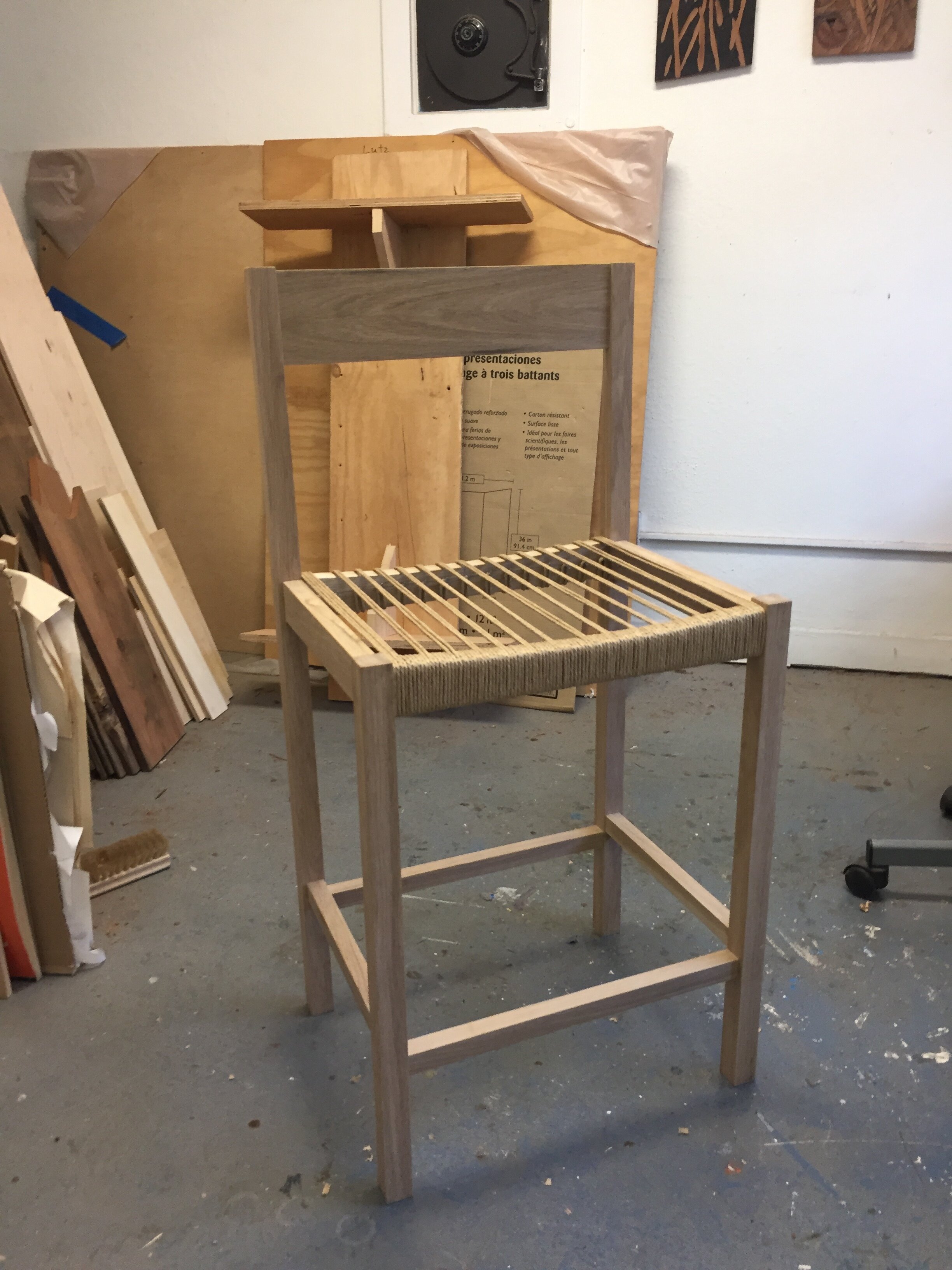This Adaptable Bookshelf is capable of changing to satisfy the owners needs, while retaining the elements of handmade craft.
A Few Years Ago
some friends asked me to design and build a large bookshelf for their home in San Francisco. They needed something sturdy which could be loaded with books of all sizes, a stereo system and records, and storage of toys and other things for their growing daughters. Still, through our conversations, a desire emerged to have something that felt light and nimble, could be moved easily if they ever moved to a new home or wanted to change the shelf location in their existing home, and could shift to satisfy numerous forms and needs. An added benefit, was that the design allowed for the shelf to be fabricated in component parts in a smaller shop, easily stored throughout the process, and easily transported and carried through the narrow passages and crannies that frequently comprise older San Francisco homes. With these dynamics in mind, we were able to come up with a design that was comprised of a wood scaffold made of vertical “ladders” that could grow or contract horizontally based on various uses. The scaffold would then be able to support both shelves and cabinets, both of which could be placed at any level within the scaffold. This allowed for a pre-fabricated, system-based approach to a bookshelf, but with the important added layer of natural wood and handmade craftsmanship, which added depth and warmth to their home. When the shelf was completed and ready to be moved, we packed it into Simon’s VW bus, drove it over the bridge, and unloaded and erected the shelf within an hour, and without breaking our backs. Translation: it was sooo easy. I think I even heard Simon whistling while he worked, but I may have imagined it.
This diagram shows the sequence of the bookshelf being assembled by component parts.
In the Following Years
Simon and Monica were able to get good use out of their shelf. Their daughters grew, life went on. Then came this year. In addition to now working and schooling their children at home, they had set in motion a plan to move to a new home. Until they moved, though, they had to figure out how they could make it all work in their existing, perpetually shrinking space. Our solution was to add another use to the existing bookshelf by fabricating a desk component that could easily replace one of the shelves. This way Monica could work from home while keeping her home largely intact and retain some sense of normalcy. Just last month they settled on a new home, and when it was time to move and place it in the new space, the shelf was up to the task. Simon was able to disassemble, move and reassemble the shelf by himself. Now we have begun discussing new ways that the system could be applied to different uses and spaces in their new house. Ultimately, the shelf was testament to an enduring relationship between me as a craftsperson and clients who were seeking solutions for their rapidly and unexpectedly changing lives. It is one of our goals at Kanna to design and build pieces that are not a burden to people, but enables them to live their lives with ease and flexibility. We strive to imbue these pieces with the uniqueness, craft and enduring stability that comes with heirloom pieces. With our lives changing so rapidly and unpredictably, how we retain something that feels permanent has became all the more important. The furniture we make and contribute to peoples lives is only part of the enduring relationships that we maintain throughout the years.
The bookshelf at the house after it’s initial install. The clients had a lot of books and records and needed something that could withstand the weight.
Here is Monica’s Work from Home desk nestled within the existing bookshelf. This was an easy, simple solution.
The shelf at their new home. The took out two of the cabinets to use elsewhere in their house.














